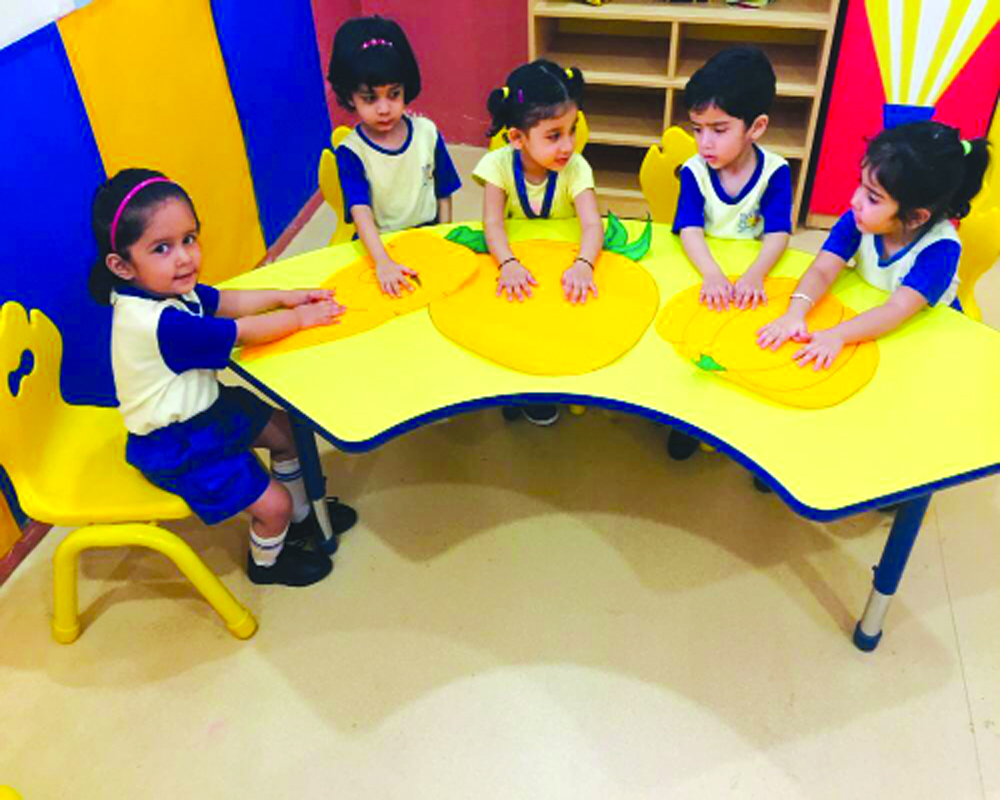The transition from home to school marks the beginning of an important phase in the life of a child. DHWANI JAIPURIA tells us how a good classroom orientation, among other things, helps to optimise children’s preschool learning experience
Pre-schooling is a child’s first exposure to formal learning outside of the familiar setting of home. To help the child make a positive start to this foundational learning, a good classroom orientation is both important and essential.
All children are natural born learners. They are gifted with sharp senses and a fresh mind that is curious to grasp knowledge of everything they see, hear, taste, smell and touch. This formative natural learning takes place in the protective environment of home and usually under the guidance of parents. By the age of three, a child’s mind is ready for formal foundational learning, comprising of literacy, numeracy and rudimentary critical thinking and problem solving. This is the time for the commencement of preschool education.
The transition from home to school marks the beginning of an important phase in the life of a child. Having grown and learned in the familiar surroundings, the child is usually wary of the new setup of the preschool and of being taught by teachers, who, till that point, are strangers. It is nothing short of a challenge for the preschools and teachers to make this transition easy and comfortable for the toddler.
A good classroom orientation, among other things, helps to optimize children’s preschool learning experience. It keeps them motivated and fosters better relationships between students and teachers and between students themselves. It is best accomplished by a smart seating arrangement.
Semi-Circle or Horseshoe Seating
The traditional seating system of rows of desks facing the blackboard is not conducive for preschool learning. It creates a sort of hierarchy (frontbenchers, backbenchers) among children and makes it difficult for them to interact and mingle with each other. Learning outcomes are also affected as the children in the front get better teacher attention than those at the back. A better option is to have the seating arrangement in the semi-circular or horseshoe shape. In this arrangement, all children get the equal attention of the teacher in the middle.
Roundtable or Full Circle Seating
For bigger classes, a roundtable seating arrangement that has children and a teacher seated facing each other is a good option. In the absence of the roundtable, they can simply be seated in a full circle arrangement which fosters the feeling of collective group learning in class.
Group or Pair Seating
Group or pair seating is an excellent way of encouraging children to get along with each other. The seating can be in the form of several groups of four or two students seated together. This arrangement fosters social emotional development in children. It instils confidence and a sense of cooperation and teamwork in them.
Optimise classroom orientation
Pre-school focuses on children’s all-round development by inculcating in them literacy, numeracy, life skills, critical thinking, problem solving and by building their gross and fine motor skills. It is done through a wide range of activities for which different classroom orientations may be called for.
Teachers must adopt a flexible approach and align the activities with the most appropriate seating arrangement. They have to be proactive in ensuring complete participation and engagement of children in class. A good teacher, gifted with the qualities of patience, attention, empathy and compassion, can get the best learning outcomes from students in a well oriented classroom.
Classroom orientation also depends upon the preschool learning programme. As much as possible, the focus initially should be on making children comfortable in the new set up and preparing them mentally and emotionally for foundational learning. Games, rhymes, role-playing, and creative activities put children at ease and at the same time help to develop their vocabulary, speech, and motor skills.
Classroom orientation in pre-schooling should be planned for each of these activities. Besides the seating plan, the classroom should be well-lighted, well ventilated, and have colourful décor to create a happy ambience in which children can feel comfortable.
The ultimate aim of a good classroom orientation is always to maximize student participation and learning outcomes.
Pre-schooling, being the foundation of learning, needs a good classroom orientation to positively shape a child’s attitude towards education for the rest of his or her life. For when the learning is optimized, the schooling truly achieves its goal.


























